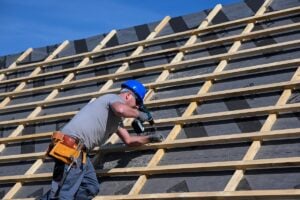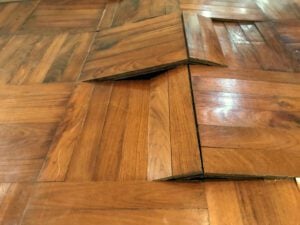A flooded garage can become a serious issue, especially when it goes unnoticed after heavy rain, snowmelt, or plumbing failures. Since garages are often located at or below ground level, they’re particularly vulnerable to water intrusion.
Addressing the problem early can help you avoid extensive damage to flooring, drywall, stored belongings, tools, and vehicles. It also minimizes the risk of mold, mildew, and electrical hazards.
So why are garages so prone to flooding, and what steps can you take to clean up the damage and prevent it in the future? In this guide, the team at Allphase Restoration will break it down for you.
Why Garages Flood in the First Place
Garages are vulnerable to flooding. They are usually built at or below ground level, which makes it easy for water to get inside during storms, melting snow, or plumbing problems.
Here are the most common reasons for a flooded garage:
- Heavy Rain or Melting Snow
Big storms or fast-melting snow can overflow drains and send water toward your garage. - Poor Sloping Around Your Home
If the ground near your home is sloped toward the garage, water will flow that way instead of away from your house. - Cracks in the Floor or Walls
Even small cracks in the concrete can let water leak into your garage during wet weather. - Broken Seals on the Garage Door
If the rubber seals under or around your garage door are missing or damaged, water can leak in during rain or snow. - Clogged or Broken Gutters and Downspouts
When gutters are full or downspouts don’t work right, rainwater can pour toward your garage instead of away. - Burst Pipes or Leaky Water Heaters
Garages often have pipes, washing machines, or water heaters. If any of these break or leak, your garage can flood from the inside.
Knowing what caused the water to get in will help you choose the best way to clean up and stop future garage flooding.
Signs of Water Damage in a Garage
A flooded garage is easy to spot when there’s standing water, but some water damage isn’t that obvious. Often, moisture builds up slowly and goes unnoticed until it causes serious problems. By learning what to look for, you can catch early warning signs and prevent costly repairs.
Here are some of the most common signs of water damage in a garage:
- Standing water or damp spots that don’t dry out quickly
- Water stains or discoloration on walls, floors, or baseboards
- Musty odors or visible mold on boxes, drywall, or stored items
- Rust on tools, shelving, or vehicles
- Warped or swollen wood, such as cabinets, doors, or framing
- Efflorescence—a white, chalky residue on concrete
If you’re unsure whether your garage has water damage, contact Allphase Restoration for professional inspection and cleanup services.
Step-by-Step Guide To Garage Flood Cleanup
If you have a flooded garage, it’s important to act quickly to protect your safety and minimize damage.
Always prioritize safety first. If water levels are high or electrical outlets are submerged, turn off power to the garage before entering. Wear protective gear such as rubber boots, gloves, and safety goggles to avoid contact with contaminated water or debris.
Once it’s safe to, follow these steps:
Step 1 – Stop the Source of Water
Before starting the cleanup, locate and stop the source of the water. Common causes include burst pipes, clogged drains, or stormwater runoff. Check your drainage systems, plumbing lines, and surrounding areas for issues. If needed, divert water away from the garage to prevent further flooding.
Step 2 – Remove Water Quickly
The longer water sits, the more damage it causes. Remove standing water quickly with a wet/dry vacuum, pump, or mops and buckets. If the flooding is severe, consider hiring a professional restoration company.
Step 3 – Protect and Move Belongings
Move any vehicles, tools, and storage boxes to a dry area. Cardboard boxes and fabric items are especially vulnerable to water damage, so replace them with plastic bins or waterproof containers in the future.
Step 4 – Dry Out the Garage Completely
Moisture left behind can lead to mold growth within 24–48 hours. Use fans, dehumidifiers, and open windows to ventilate the space. Restoration specialists can use moisture meters to confirm that surfaces are fully dry.
Step 5 – Clean and Disinfect Surfaces
Floodwater can contain bacteria, chemicals, or other contaminants. Scrub floors and walls with disinfectants to avoid health and safety hazards.
Step 6 – Repair Damaged Materials
Inspect the garage for cracked concrete, damaged drywall, or ruined insulation. Replace materials that cannot be salvaged, and consider reaching out to the pros to seal the floor or patch cracks to prevent future leaks.

When To Call a Water Damage Restoration Professional
While small garage floods can sometimes be handled on your own, there are situations where it’s safer and smarter to call in the pros.
Here’s when you should reach out to a water damage restoration expert:
- The water is contaminated.
If the flood came from a sewage backup or storm runoff, it could carry harmful bacteria, chemicals, or other hazardous materials. Cleanup in these cases requires special equipment and training. - Electrical systems are affected.
If outlets, wiring, or the electrical panel got wet, don’t take any risks. Water and electricity are a dangerous combination and should be handled by professionals. - Mold growth is visible.
Mold can spread quickly and is difficult to remove. If you notice any signs of mold, it’s best to bring in a professional to fully remove it and prevent it from returning. - Flooding is recurring.
If your garage floods regularly, you’re likely dealing with a bigger issue. A restoration expert can help you find and fix the root cause.
Professional restoration companies use advanced equipment to quickly assess the damage, remove the water, and recommend long-term solutions.
Ohio homeowners trust Allphase Restoration for 24/7 garage flood cleanup.
How To Prevent Garage Flooding in the Future
With the right preventative steps, you can reduce the risk of your garage flooding again, even during heavy rain or snowmelt. Taking action now can save you time, stress, and costly repairs later.
Here are some of the most effective ways to keep your garage dry all year long:
- Keep gutters and downspouts clear
- Install a trench drain or floor drain
- Replace worn or cracked garage door seals
- Improve grading around the garage
- Seal cracks in the garage floor and walls
- Store items on shelves or in waterproof containers, not directly on the floor
Why Choose Allphase for Garage Flood Cleanup
At Allphase Restoration, we know how disruptive and stressful garage flooding can be. Whether it’s standing water, soaked drywall, or recurring moisture issues, every minute counts when it comes to preventing lasting damage.
We have specialized experience dealing with the unique challenges of garage water damage, from concrete floor drying to insulation and structural repairs. That’s why homeowners across Central Ohio trust us for fast, effective, and long-term solutions.
Here’s what sets us apart:
- 24/7 Emergency Response
- Specialized Garage Restoration Expertise
- Local Knowledge of Ohio’s Climate and Flooding Risks
From immediate water removal to long-term prevention, Allphase Restoration is your trusted partner in keeping your garage dry, safe, and protected.
Contact Allphase for Fast, Reliable Garage Water Damage Restoration
If your garage has flooded, don’t wait. Every hour makes a difference in preventing permanent damage and mold growth. Allphase Restoration is here to help with water removal, structural drying, repairs, and prevention strategies tailored to your home.
Whether you’re in Columbus or nearby communities like Powell, our team is ready to restore your garage and protect your property. Call today for a fast inspection or emergency service.
Garage Flooding FAQ
- How much does garage water cleanup cost?
The cost depends on the size of the flooded area, the amount of water, and the extent of the damage. A detailed inspection is the best way to get an accurate estimate. - Can I dry out a flooded garage myself?
You can clean up small amounts of water using fans and a wet/dry vacuum. However, water can seep into walls or under flooring. If you’re unsure whether everything is fully dry, it’s best to call a professional with the right tools to check for hidden moisture. - How fast can mold grow in a flooded garage?
Mold can start growing within 24–48 hours of water exposure. That’s why fast drying and disinfection are essential after any flooding. - Does homeowners’ insurance cover garage flooding?
It depends on the cause of flooding. Water damage from burst pipes is usually covered, but surface water from heavy rain or flooding may not be, unless you have specific flood insurance. Review your policy or speak with your provider to confirm. - What’s the safest way to store belongings in a flood-prone garage?
Use plastic storage bins, metal shelving, or wall-mounted racks to keep items off the floor. Avoid cardboard boxes, which can break down quickly when wet. - Should garage flooring be replaced after a flood?
It depends on the material and severity of the damage. Concrete can often be cleaned and sealed. However, wood, laminate, or carpet flooring usually needs to be replaced.




